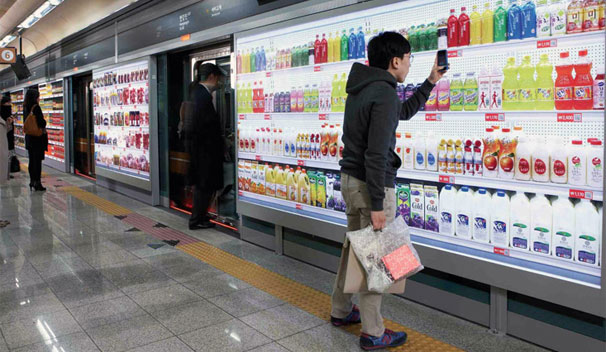

QR codes are designed to bridge the gap between the real world and the virtual world. They are the hyperlinks from print to the web and in this case, a perfect example of how bringing reality and the virtual together can actually bring added benefit to people’s lives. When Tesco lined the Korean Subways with realistic aisles that mimic a real grocery and allowed people to shop while they waited for the subway, they transformed that wasted time, into a time for shopping. They transformed an economic deadzone into a shopping experience. This is especially useful to people in Korea because they work really long hours and stores are crowded.
Now they can have their deliveries sent directly to their home later that day just by scanning the corresponding QR code and adding it to their cart. It’s a pretty ingenious idea and implemented extremely well. Not all QR code campaigns are adapted this well, but customers still get some joy every time a QR code scan works. I see it all the time and I hope that as Quick Response, Near Field Communications, Augmented Reality and other technologies are implemented, that the divide between the real world and the digital world will blur.
How much information are we missing by not knowing it exists. Being connected with the information we “would like” is an important feature of the web. However, when in the real world, it is easy to walk by a historic site and not even know what has transpired there. If we lived in a more augmented reality, I would be notified or have that information pushed to me. This is the reason you see QR codes appearing on graves and with people attempting to do this. It is an idea, that if properly implemented could become a ubiquitous facet of our everyday lives.
